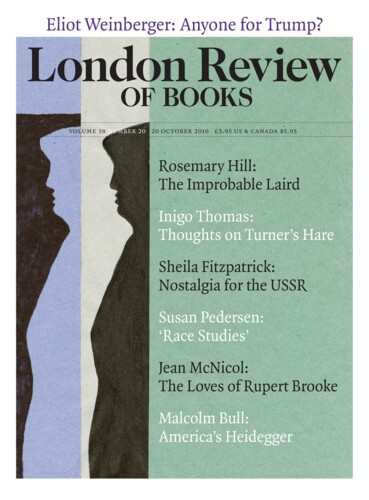The Festival of Britain showed postwar Britain what it might yet be. The crowds flocked to London to see the Skylon and visit the Dome of Discovery. Peter Laszlo Peri’s concrete Sunbathers writhed on a wall at Waterloo Station (recently found lying in a hotel garden in Blackheath, they are being restored after a crowdfunding campaign and will soon return to the South Bank) as the visitors came off the trains in their thousands. Rowland Emmett’s toy railway was the main attraction at Battersea Pleasure Gardens. More seriously, the Living Architecture exhibition in Poplar, the Lansbury, though still largely under construction, offered a prototype for modern New Town living. The estate caught the local imagination, showing how enlightened planning, social policy and architecture could be harnessed.
Gillian Darley
Gillian Darley is an architectural historian whose books include Excellent Essex and biographies of Sir John Soane, John Evelyn and Octavia Hill, the founder of the National Trust.
At the Train Station
Gillian Darley, 20 October 2016
Over the years, travelling to Birmingham from time to time, I’ve noticed a handsome classical building, a kind of mirage that comes into view briefly as the train approaches New Street Station. Then, like almost everyone else it seems, I forget all about it – not even bothering to find out what it was. Stranded, isolated and distant in a nondescript wasteland of car parks and...
In the words of Irina Bokova, the director-general of Unesco, the fate of World Heritage Sites – from the bridge at Mostar to the temples of Palmyra – ‘is not about just bricks and stones’ but ‘the way we see human civilisation developing’. Tim Slade’s new documentary film The Destruction of Memory, based on Robert Bevan’s book of the same name, is a measured indictment of the failure of international bodies to find the words for the crime of cultural vandalism, and so offer legal protection to important buildings in war zones.
Artists’ impressions of yet-to-be-made architectural designs show impossibly pristine buildings, their materials innocent of wear and tear, the images (let alone the weather and the light) adjusted, enhanced and cropped into submission. In this honeymoon period, no one questions performance, or durability, or if the architecture will necessarily deliver the desired outcome. (In the early years of her career, as she shifted from constructivist imagery to international practice, nobody nudged the apparent limits of the possible more consistently than Zaha Hadid, who has been awarded the 2016 RIBA Gold Medal.)
In Southampton last week, a city I am completely unfamiliar with, I noticed at the entrance to the City Art Gallery an attractive blue roundel. Bearing the date 2007 it commemorated, seventy years after the event, the arrival of almost 4000 refugee children, with a small support team of teachers, priests and volunteers, from Guernica.
Pieces about Gillian Darley in the LRB
Half-Wrecked: What’s left of John Soane
Mary Beard, 17 February 2000
It is hard to resist the conclusion that Soane’s central place in architectural mythology is connected to the fact that he can be ‘reinvented’ more freely than those architects whose buildings do...
Read anywhere with the London Review of Books app, available now from the App Store for Apple devices, Google Play for Android devices and Amazon for your Kindle Fire.
Sign up to our newsletter
For highlights from the latest issue, our archive and the blog, as well as news, events and exclusive promotions.


